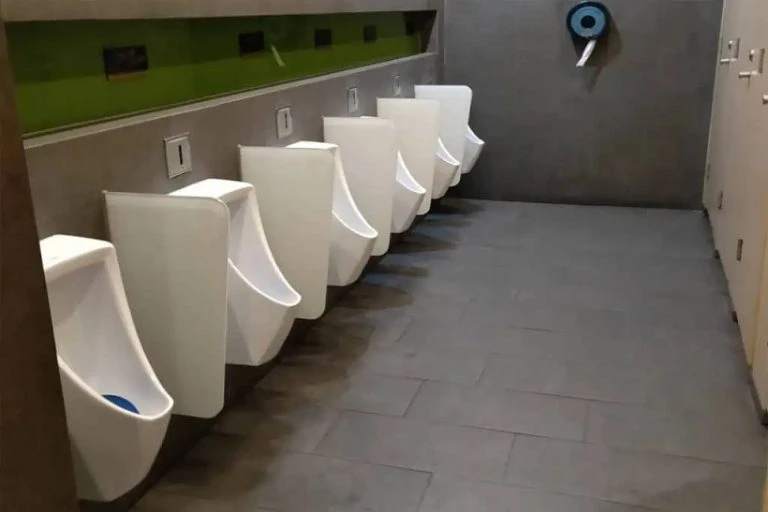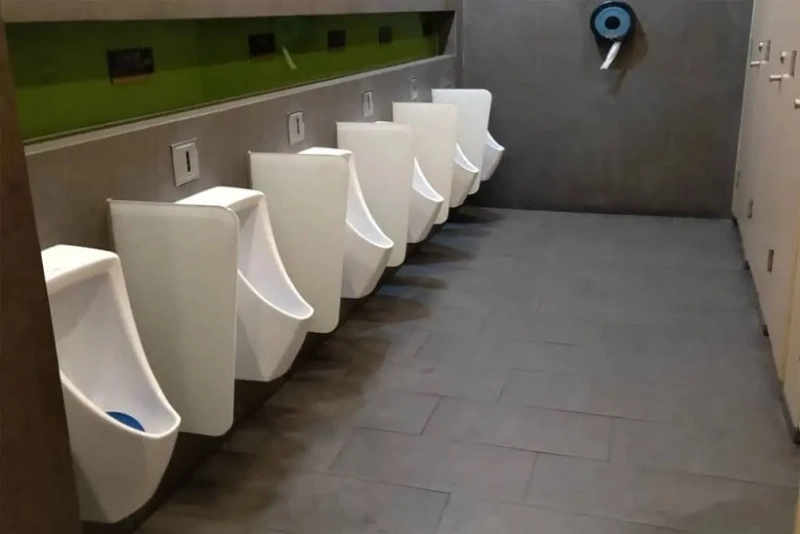 Introduction:
Introduction:
In the fast-paced world of technological advancements, every aspect of our daily lives is being reimagined for efficiency and convenience. One such area that has seen significant innovation is washroom hygiene. Traditional urinals, while serving their purpose, have often been associated with challenges related to cleanliness, water wastage, and maintenance. However, a revolutionary solution has emerged – the Automatic Urinal System.
- The Need for Change:
Traditional urinals have long been a staple in public restrooms, but they come with their fair share of drawbacks. Some of the common issues include:
Hygiene Concerns: Manual flushing mechanisms pose a risk of spreading germs and bacteria, leading to concerns about hygiene in high-traffic areas.
Water Wastage: Traditional flush systems often use more water than necessary, contributing to environmental concerns and increased utility costs.
Maintenance Challenges: Manual flushing systems can be prone to mechanical issues, leading to frequent maintenance and downtime.
- The Automatic Urinal System:
The automatic urinal solution addresses these challenges by incorporating cutting-edge technology to provide a more hygienic, water-efficient, and low-maintenance alternative. Here are some key features:
Motion Sensors: Automatic urinals are equipped with motion sensors that detect when a user is present. This hands-free approach eliminates the need for physical contact with flush handles, reducing the risk of germ transmission.
Water Efficiency: These systems utilize advanced flushing mechanisms that optimize water usage, ensuring that only the necessary amount is used for each flush. This not only saves water but also contributes to lower utility bills.
Smart Maintenance: Automatic urinal systems often come with built-in diagnostic tools that can alert maintenance staff to potential issues before they become major problems. This proactive approach minimizes downtime and reduces the overall cost of upkeep.
Customizable Settings: Users and facility managers can often customize settings such as flush strength and frequency, allowing for a tailored experience that meets specific needs.
III. Environmental Impact:
The environmental benefits of automatic urinal systems extend beyond water conservation. By optimizing water usage, these systems contribute to sustainability efforts and help organizations meet their eco-friendly goals. Additionally, the reduction in maintenance requirements translates to fewer resources being used for repairs and replacements.
- User Experience:
Beyond the practical advantages, the automatic urinal system enhances the overall user experience. The touch-free operation not only improves hygiene but also adds a modern and sophisticated touch to restroom facilities. Users appreciate the convenience and cleanliness offered by these innovative solutions.
- Implementation in Various Settings:
The automatic urinal solution is versatile and can be seamlessly integrated into a variety of settings, including:
Commercial Spaces: Offices, shopping malls, and other commercial establishments benefit from the efficient and hygienic features of automatic urinal systems.
Public Restrooms: High-traffic areas such as airports, train stations, and stadiums can significantly improve restroom hygiene and user experience with these advanced systems.
Hospitality Industry: Hotels and restaurants can enhance their reputation by providing a more sophisticated and sanitary restroom experience for guests.
- Future Developments:
As technology continues to evolve, the automatic urinal solution is likely to undergo further advancements. Future developments may include:
IoT Integration: Connecting urinal systems to the Internet of Things (IoT) for real-time monitoring and data analysis, allowing for even more efficient and predictive maintenance.
Water Recycling: Exploring water recycling technologies to further reduce the environmental impact of restroom facilities.
Smart Analytics: Utilizing data analytics to understand usage patterns, optimize water usage, and enhance user satisfaction.
Conclusion:
The Automatic Urinal Flusher solution represents a significant step forward in washroom hygiene, addressing longstanding issues associated with traditional systems. By combining cutting-edge technology with a focus on water efficiency, hygiene, and user experience, this innovation is transforming restroom facilities across various industries. As we continue to prioritize efficiency and sustainability, the automatic urinal solution stands as a beacon of progress in the ever-evolving landscape of washroom technologies.



